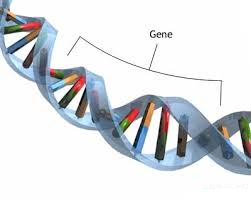Science > Biology > Gene its Nature, Expression and Regulation > Gene: The Concept, Characteristics, and Functions
In this article, we shall the essential characters of genetic material, the meaning of the term gene, its characteristics, and its functions.
Essential Features of Genetic Material:
- It should have the ability to store hereditary information in coded form.
- It should be present in all the cells of the organism.
- It should show diversity corresponding to the varieties existing in the organisms.
- It should have the capacity to replicate itself to produce a carbon copy that could be transferred to daughter cells (successive generations).
- It should able to express itself through specific biological molecules like proteins and enzymes.
- It should have physical and chemical stability so that the stored information is not lost.
- It should be capable of differential expression so that the various parts of an organism may acquire specific form, structure and functions in-spite of having the same genetic material.
- It should undergo gradual mutations and recombinations so that the new characters appear in the organism to produce diversity. Thus The genetic material should be able to generate its own kind and also new kinds of molecules.
Gene:
A gene may be defined as a segment of DNA which is responsible for inheritance and expression of a particular character. A gene is a segment of DNA that provides instructions for the synthesis of a specific protein or a particular type of RNA.

Mendel was first to call genes as a unit of inheritance and called them factors. The term ‘gene’ was derived from the Greek word ‘Genesis’ which gives the meaning ‘to be born’ and was coined by a Danish Geneticist- Wilhelm Johannsen in 1909.
Characteristics of Genes:
- Genes are the functional unit of heredity, variation, mutation and evolution. Genes determine the physical as well as physiological characteristics of organisms. Genes are responsible for transferring these characters from parents to the offspring generation after generation.
- They are situated in chromosomes.
- Every gene occupies a fixed position in a chromosome. This position is called a locus.
- They are arranged in a single linear order in a chromosome as beads on a string.
- They express them by the synthesis of proteins and enzymes, which control cell metabolism. Thus they determine the physical and metabolic characteristics of the cell. Each gene synthesizes a particular protein which acts as an enzyme and brings about the appropriate change.
- They can produce a duplicate copy of themselves. The process is called replication.
- In a single gene they may occur in several different forms called alleles. Only those genes are known which have their alternative alleles. The alleles may be related as dominant or recessive but not always.
- Some alleles mutate more than once and have more than two alleles. These alleles are known as multiple alleles. Whatever may be the number of alleles in a multiple series only two of them are found in an individual because of the presence of two homologous chromosomes of each type.
- They may show a sudden change in expression from one form to another due to a change in composition. This sudden change is called mutation and the new allele is called a mutant.
- There is a large number of genes in organisms while the number of chromosomes is small. Hence several genes are located in each chromosome. In the human being, there are about 40,000 known genes located on 23 chromosomes.
- A gene is a segment of DNA which contain information for the synthesis of one enzyme or one polypeptide chain coded in the language of nitrogenous bases or the nucleotides.
Modern Concept of Gene:
Seymour Benzer in 1955 introduced the terms cistron, muton, and recon
Cistron (Unit of function):
- It is a segment of DNA having information of synthesis of particular protein or RNA.
- It is responsible for the expression of a trait.
- It can be several bp (base pairs) long.
Muton (Unit of mutation):
- It is a segment of DNA that can undergo mutation.
- It consists of few nucleotides (one to a few bp long).
Recon (Unit of recombination):
- It is a segment of DNA that participates in recombination through crossing over during meiosis.
- It consists of a few to many base pairs.
Operon:
- It is a combination of an operator gene, a structural gene or sequence of structural genes which act together as a unit.
Replicon:
- It is the unit of replication
Functions of Genes:
- Genes are the functional unit of heredity, variation, mutation, and evolution. Genes determine the physical as well as physiological characteristics of organisms. Genes are responsible for transferring these characters from parents to the offspring generation after generation.
- Genes control the phenotypes of the offspring including both the structural and functional characters.
- Genes control reproduction through their replication.
- Genes undergo mutations and produce polymorphism and variations in the individuals of a population. These mutations are also associated with metabolic disorders and inborn errors of metabolism.
- Genes are associated with the aging process.
- Genes are responsible for producing cancer.
- Control genes regulate transcription of mRNA and thus regulate the amount of protein synthesized.
- They code for different types of RNAs other than mRNA like rRNA and tRNA.
- Genes are responsible for switching on and off specific genes as per the requirement of the organism.
- Genes control the functioning of luxary genes.
- They produce cellular differentiation during development.